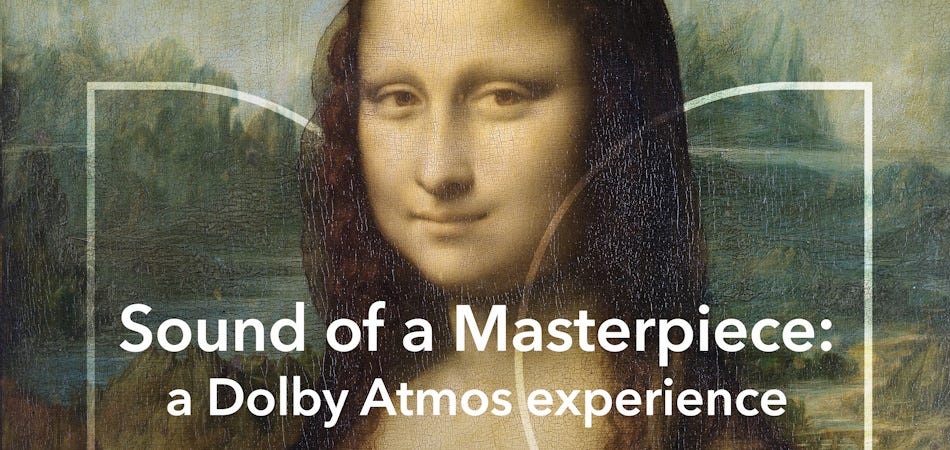⚡ Input is Output - Issue #7
AI 2027, The End of Programming, Design in Tech, the Sound of a Masterpiece and Lads Mags
Hey, you. Yes, you. Welcome back to Input is Output.
It's been… a minute.
Seven weeks, to be precise, though time's felt like a strange accordion lately. A whole lot happened (and then didn't). Still, the newsletter gently slid down the priority pile between travelling to Western Australia, the UK and Singapore, chasing a toddler, consulting work, and looking for a new job! Classic.
This edition is a bit of a mixtape of thoughts, signals, and provocations, following quite a strong theme, all running through the filter of a human who's finally found time to sit down and write.
Anyway, it’s a big one. Let’s go.
This week’s Input is Output in summary:
⚡ 5 Things:
💭 Thought for the week: AI Agents - Disruptors or Defenders
⚡ AI 2027
I stumbled across AI 2027 this morning and instead of bookmarking to come back to later I couldn't stop scrolling. It’s not a whitepaper or a trend deck, it's a beautifully crafted piece of speculative storytelling that drops you into 2027, where AI is woven into the fabric of everyday life. Think: dating, parenting, creating, working, all subtly shaped by machine intelligence.
What makes it unique is the tone. It's not sci-fi. It's not doom. It’s plausible. Familiar, even. You could read this and think, yeah, this could be my Tuesday in a couple of years.
Whether you're a marketer, technologist, strategist, or just AI-curious, this is a masterclass in bringing future scenarios to life in a way that sticks. It’s a reminder that the future isn't just something we forecast. It's something we write, design, and shape today.
👉 Read it here.
⚡ The End of Programming as We Know It
I keep returning to this piece from O'Reilly: The End of Programming as We Know It. It's not just another hot take on AI-eating dev jobs; it's a sharp, level-headed look at what happens when the foundational skill of the last 50 years (writing code) starts to become… optional.
What struck me is how it reframes programming not as a disappearing craft but as a shifting interface. We're moving from code-as-language to intent-as-input, and that unlocks a vast creative frontier. If you're into low-code, no-code, or tools like Loveable, this essay articulates the underlying shift in an inevitable way, not alarmist.
It's not just about the future of programming but of making things. The article draws a clear line from early compilers to current LLMs, and it ends with a compelling provocation: in this new paradigm, how do we decide what to build when the building becomes frictionless?
👉 Read it here.
⚡ Autodesigners on Autopilot
John Maeda's latest post explores something quietly seismic: the rise of the autodesigner, a new kind of creative professional that doesn't just design with AI but designs through it.
This isn't just about speeding up workflows or spitting out iterations. It's about a fundamental shift in what it means to "design" at all. Tools like Figma are beginning to make competent design decisions automatically. When the system can do the sensible thing for you… what's left for you to do?
Answer: you steer. You set the tone. You ask the right questions. You decide what not to make.
"We are entering a time where the creative act is less about making and more about deciding what not to make." – John Maeda.
The rise of autodesign isn't just about efficiency. It's a new philosophy of work. It is one where craft meets curation and where your edge is in knowing what matters, not just making something that works.
It's a short, thoughtful read that might reframe your thinking about your role in the creative process.
👉 Read it here.
⚡ The GenX career meltdown
I felt this one in my bones.
The New York Times just published a piece that might as well be titled "What the Hell Happened to My Career?" It's a sobering, beautifully written portrait of Gen X creatives, people like me, who came of age in the analog world, built careers in industries like advertising, design, music, and media… and now find themselves watching those careers vanish in slow motion.
"It's as if they were making candlesticks when electricity came in."
That line hit hard. Yeah, I started my career pushing pixels and hacking ideas into Flash banners. I lived through the rise of the internet, the iPhone, the influencer, the algorithm, and now AI. I adapted, pivoted, and reinvented. Yet there's still this weird feeling: the thing I spent two decades getting good at quietly stopped mattering.
This piece is about that feeling. And about what comes next.
It profiles ad creatives who've been pushed out, photographers who now assist on shoots to make ends meet, and magazine editors who have turned therapists. Agency leaders are terrified of what AI might do to the last few jobs that haven't already been outsourced or automated. It's a snapshot of a generation that was never promised anything but still feels like the rug got pulled mid-step.
Regardless, people are still making stuff, still reinventing, and still finding new ways to show up.
"Continuing to make stuff is the path forward."
That's the line I'm holding on to.
This article is a mirror for those of us trying to stay in the game or find the next one. Not always flattering. But honest. If you're a Gen X creative, read it. If you're younger, read it too; it's a glimpse of where the disruption goes next. And if you're leading teams or building businesses, ask yourself: Are we making room for experience? Or just rewarding speed and novelty?
This one's not just worth reading — it's worth sitting with.
👉 Read it here.
⚡ Dolby’s “Sound of a Masterpiece”
Dolby's "Sound of a Masterpiece" is an innovative project that reimagines iconic artworks as immersive musical compositions, aiming to make visual art more accessible, especially for the visually impaired.
In collaboration with composer Bobby Goulder, who has Stargardt's Macular Dystrophy, Dolby Laboratories and the Royal National Institute of Blind People (RNIB) have transformed pieces like da Vinci's Mona Lisa and Munch's The Scream into evocative soundscapes.
Utilising Dolby Atmos technology, these compositions capture the essence of each painting through layered, spatial audio experiences. For instance, The Scream features dark, heavy piano tones and distorted nature sounds to convey anxiety.
At the same time, Monet's Water-Lily Pond employs soft, dream-like piano and water droplet effects to mirror the shimmering light on water.
This initiative offers a novel way to experience art and supports RNIB, with proceeds from the album aiding their efforts to make art more inclusive. The album is available on platforms like Apple Music, Amazon Music, and Tidal.
⚡ Thought for the week: AI Agents - Disruptors or Defenders?
In past editions of Input is Output, I've examined how innovation, data, and automation promise to make life easier, but often at the cost of something more human: attention, memory, creativity, and agency. This week, I want to examine where that trend might be heading with AI agents.
I’m stuck on the thought that we used to design tools to help us think. Now, we're developing tools that think for us.
For years, designers have preached that great UX should be invisible and that the best interfaces seamlessly blend into the background. But what happens when the interface doesn't just fade away, but AI agents take over and act on our behalf?
We're entering an era where the question isn't "How do I do this?" but "What should be done?" and increasingly, AI will answer without us.
At first, this sounds like progress: less friction, more automation, better outcomes. However, this shift isn't just about convenience but control.
AI agents aren't just removing effort; they're removing our ability to see and shape our choices. When an AI pre-filters our search results, auto-manages our schedules or handles our emails, it's deciding in ways we don't see what matters and what doesn't. For instance, when an AI assistant schedules a meeting for us, it's not just finding a time that works for everyone; it's also deciding which tasks we can skip to make time for the meeting.
You don't book a flight; you're booked on the "best" one.
You don't shop; you're sent "what you need."
You don't decide what to read; it's curated for you.
This is algorithmic determinism in action. AI isn't just shaping what we do but who we become.
For me, the real problem isn't just that AI is making decisions for us; it's that some may not even realise it's happening.
If an AI agent negotiates a deal on your behalf, would you know if it made trade-offs you wouldn't have?
If AI-generated insights guide your strategy, are you still the strategist?
If AI remembers everything for you, what happens to your ability to remember?
It's important to note that friction isn't always bad; it's where critical thinking happens. If AI removes friction entirely, we risk losing our sense of agency and becoming mere passengers in our own lives.
The endgame of AI-driven UX isn't just better efficiency; it's a fundamental restructuring of human decision-making. The systems that once served us will start shaping us in ways we don't fully understand.
So I have to ask:
Who controls the agent that controls you?
What happens when our choices are optimised but no longer ours?
If AI makes the decisions, are we still active participants or just passive passengers?
The best UX removes friction, and the best AI removes decisions. The real challenge isn't making AI more powerful. It's ensuring we stay in control.
Because what we delegate, we diminish.
👀 What I’ve been…
📺 Watching: Loaded: Lads, Mags and Mayhem
A chaotic blend of football, beer, and barely-clothed bravado that captured the spirit of Britpop masculinity in all its messy, unapologetic mayhem. Brilliant!
📚 Reading: Careless People - Sarah Wynn-Williams
An introspective memoir by former Facebook insider Sarah Wynn-Williams, unpacking the culture, contradictions, and quiet disillusionment of life inside Big Tech at the height of its power.
🎧 Listening: Your Undivided Attention
From the Center for Humane Technology, co-hosts Tristan Harris and Aza Raskin explore the unprecedented power of emerging technologies: how they fit into our lives, and how they fit into a humane future.
💻 Trying: Loveable
Loveable is part playground, part protest against the cold logic of traditional development tools. I love it ;)
That’s it for this edition. If something here made you think, made you pause, or just made you feel a little more human in the face of all this tech, I’d love to hear from you. Hit reply, share it with a friend, or just let it percolate.
Until next time, stay curious, stay kind, and keep making stuff that matters.
James



